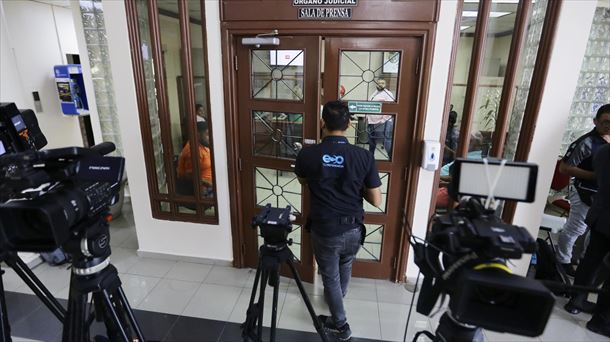In the margins of the European Gas Conference in March this year, there were sometimes violent clashes between the police and climate activists. The executive used tear gas and batons to protect the venue, the Marriot Hotel on Vienna’s Parkring. There was criticism of the police action. Greenpeace spoke of a “disproportionately harsh response”. Interior Minister Gerhard Karner (ÖVP) now justifies using the Greens when answering a parliamentary question.
The police officers used pepper spray “after realizing that the mere use of physical force was not enough to stop the activists’ acts of resistance against the blocking chain”. The operation is still being evaluated, but from the point of view of the interior minister, who refers to the Viennese state police in this assessment, there was “no excessive police force”. The Vienna State Office for the Protection of the Constitution and Counterterrorism (LVT) and the Directorate for State Security and Intelligence (DSN) had issued advance warnings against “violent activists from home and abroad”, the minister emphasized. In addition, according to Karner, there were “indications that attempts would be made to break into the event venue by force” and “actions such as spontaneous meetings and blockades are being taken”.
Activists wanted to break the police cordon
According to the police, a group of about 166 activists had tried to break through the police cordon and thus the previously imposed ban on space around the hall. Police responded with widespread use of pepper spray and batons. A video on Twitter showing how a police officer beats several protesters in the kidney area also caused criticism. The measure was subject to legal review and the official was identified, it said in the response to the inquiry, which is available to the APA. However, “no excessive police brutality was acknowledged” by the headquarters of the Vienna State Police. The person concerned had not made any allegations of abuse.
Further recordings showed the use of pepper spray when the demo train was already stopped by the police – also at close range. In an emergency, the police also released recordings of the “Standard” journalist Markus Sulzbacher on the short message service Twitter. An officer can be seen near the protest giving the order “Go ahead”. Karner admits that this diction “is not a common form of communication. However, depending on the situation, the need for a concise order to prevent damage may arise in the event of imminent danger. On orders, a large contingent of police charged toward the cordon.
Karner explains that in some cases the minimum distance was not met when tear gas was used in a “self-defense situation”, where the officers involved would have put themselves in danger.
Source: Krone
I am Wallace Jones, an experienced journalist. I specialize in writing for the world section of Today Times Live. With over a decade of experience, I have developed an eye for detail when it comes to reporting on local and global stories. My passion lies in uncovering the truth through my investigative skills and creating thought-provoking content that resonates with readers worldwide.



